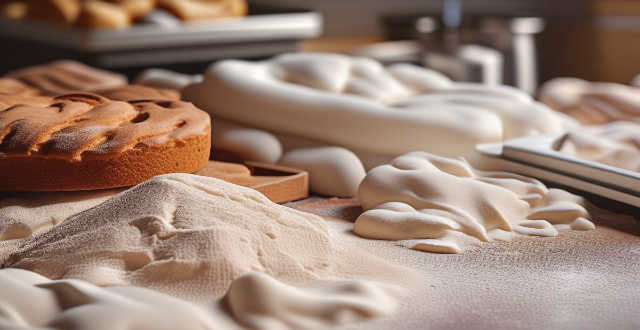Choosing the right type of flour for baking is crucial for achieving the desired texture, flavor, and appearance in your baked goods. All-purpose flour is versatile and widely available, making it a safe choice for most recipes. Bread flour has a higher protein content and is ideal for yeast breads, while cake flour is perfect for tender cakes and pastries. Whole wheat flour adds nutrition and flavor but may make baked goods denser. Self-rising flour is convenient for certain regional recipes but not as versatile as all-purpose flour. When choosing flour, read the recipe carefully and follow the recommended type, consider adjusting liquid ratio or mixing time when substituting, store flour properly, and experiment with different types to find your preferred texture and flavor profile.

Choosing the Right Type of Flour for Baking
When it comes to baking, selecting the right type of flour is crucial for achieving the desired texture, flavor, and appearance in your baked goods. Here are some tips on how to choose the right type of flour for your baking needs:
1. All-Purpose Flour
All-purpose flour is a versatile flour that can be used for a wide range of baked goods, including cookies, cakes, pies, and bread. It has a medium protein content, which makes it suitable for most baking recipes. If a recipe doesn't specify a particular type of flour, all-purpose flour is usually a safe choice.
Pros:
- Versatile and widely available
- Good for a variety of baked goods
- Easy to work with
Cons:
- Not ideal for delicate pastries or artisan breads
2. Bread Flour
Bread flour has a higher protein content than all-purpose flour, which gives it more gluten strength. This makes it ideal for yeast breads and other breads that require a chewy texture.
Pros:
- Higher protein content for better gluten development
- Ideal for yeast breads and rolls
- Creates a chewier texture
Cons:
- Not suitable for tender cakes or pastries
- Can make dough tough if overmixed
3. Cake Flour
Cake flour has a lower protein content than all-purpose flour, which makes it ideal for tender cakes and pastries. Its finer texture also helps create a lighter crumb.
Pros:
- Lower protein content for tender cakes and pastries
- Finer texture for lighter crumb
- Ideal for delicate desserts like sponge cakes
Cons:
- Not suitable for bread or hearty baked goods
- Can be harder to find than all-purpose flour
4. Whole Wheat Flour
Whole wheat flour contains the entire wheat kernel, including the bran and germ, which gives it a higher fiber content and a nuttier flavor. It's great for adding nutrition and flavor to your baked goods, but it may also make them denser and heavier.
Pros:
- Higher fiber content and nuttier flavor
- Adds nutrition to baked goods
- Great for whole grain breads and muffins
Cons:
- Dense texture in some baked goods
- Strong flavor may not be suitable for all recipes
5. Self-Rising Flour
Self-rising flour is a combination of all-purpose flour, baking powder, and salt. It's commonly used in Southern US cuisine for biscuits and cakes. However, it's not as versatile as all-purpose flour since you can't control the amount of leavening agents in your recipe.
Pros:
- Convenient for certain regional recipes
- Pre-mixed with leavening agents and salt
- Quick and easy to use
Cons:
- Not as versatile as all-purpose flour
- Limited control over leavening agents in your recipe
Tips for Choosing Flour:
- Read the recipe carefully and follow the recommended type of flour.
- If substituting one type of flour for another, consider adjusting the liquid ratio or mixing time accordingly.
- Store flour properly in an airtight container to prevent spoilage and contamination.
- Consider experimenting with different types of flour to find your preferred texture and flavor profile.